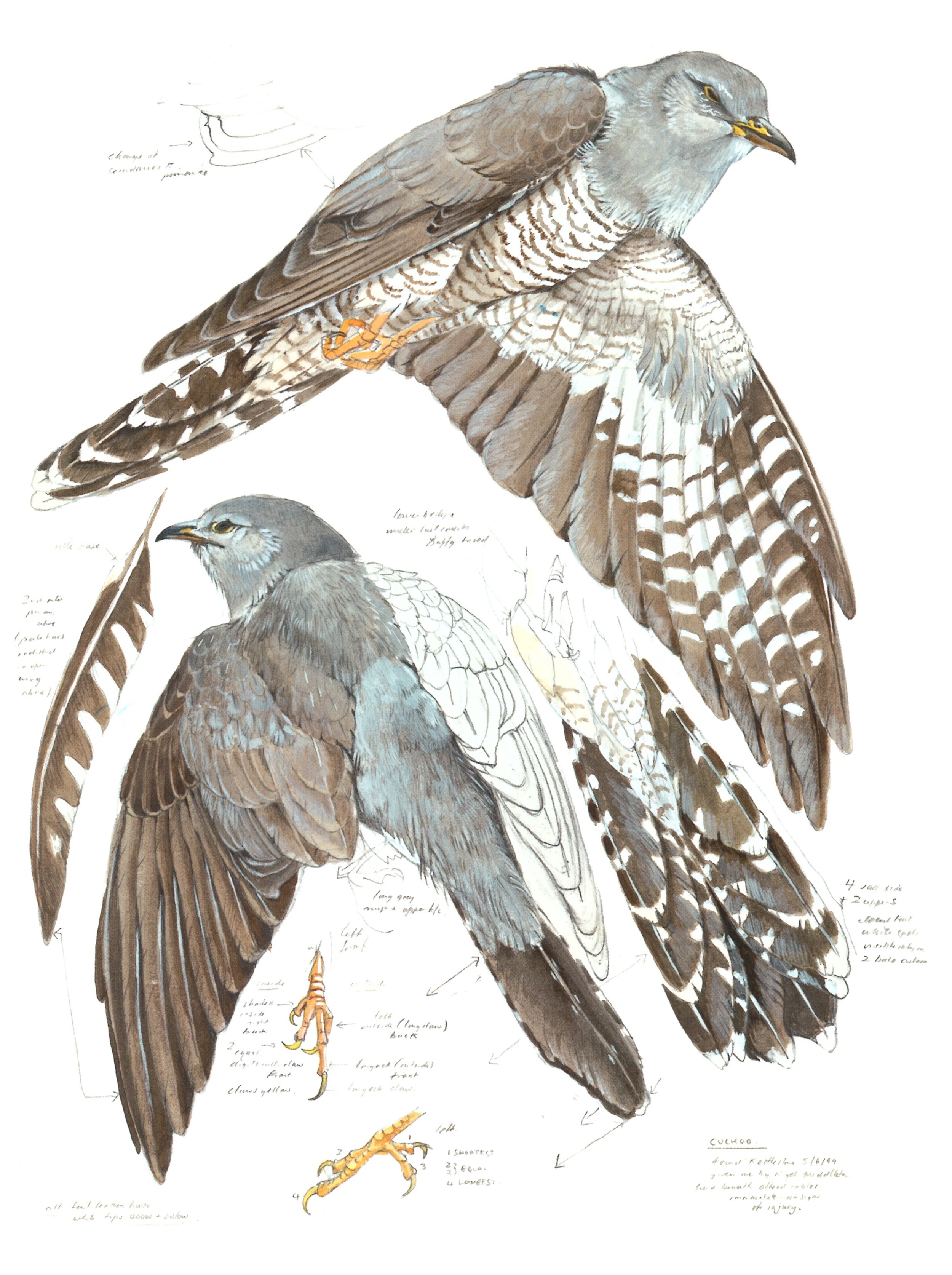COMMON CUCKOO (Cuculus canorus) - Coucou gris
Summary
Not an uncommon bird which is fairly secretive except for the call which is probably known by everyone:
© Arlette Berlie
Distributed mainly in the Jura, pre-alps and alpine valleys right up to the alpine zone at about 2,400m, the call of the Cuckoo is probably the best known of all bird song, and when the first is heard in late March or early April it is a real sign that spring is underway.
Although most people will recognise the basic call, the variety of sounds made by Cuckoos are much greater than most people realise. The basic call is a two-note, low-frequency sound, the first note (usually made with the neck extended) being higher than the second, up close it sounds quite unexciting:
But it can also be quite mellow and resonate from surrounding vegetation, the following sonogram is of a recording made in heavy woodland in May:
You can see that the first note is at about 650 Hz and the second lower at 500 Hz, note also that in the sonogram file the two notes were closer together and delivered at a faster rate than in the sound file above it.
Here is another bird that sounded quite subdued but was actually calling pretty fast:
And here is one that verged on the hysterical, breaking the rhythm from cuc-koo to doing cuc-cuc-koo; but there is also something else interesting going on here, listen carefully - I have only a short piece so will play it twice:
© Arlette Berlie
An increased rhythm or rate of calling indicates a bird that is excited, usually caused by the presence of another competing male, or maybe the female is in sight. But listen again to that last recording and you can hear a new sound - a sort of low chuckle that immediately follows the call. Some authors call this the "gowk" call, and though it can be made by the female it is also used by the male when he is in pursuit of a female - a sort of dirty little chuckle ("give us a kiss darlin'").
Here is another example from a bird that does a normal call, then the chuckle, then three very clear "gowks" before resuming his normal call:
So far this story has focused on the male as he is by far the most vocal of the pair, but the female does have her own very distinctive bubbling call. It is not used often and then only in small snatches, so it is hard to record, I have read that it may be used after egg-laying, or when responding to a male seeking copulation.
To help you get familiar with it here it is in a sonogram which focused just on this particular call. In the background you can also hear a woodpecker excavating and the gruff voice of the male, but the female bubble call is quite clear I think - let it play a few times until you feel you have it:
Cuckoo - female “bubble” call
So now here it all is in context. I was at the side of Lac de Neuchatel and had seen a female cuckoo being pursued by a male, they landed on a branch not far from where I was standing. In the following recording you can hear the male "gowk and chuckle" at first as he solicits the female, then she responds with the "bubble call", then the male resumes with the "gowk" call. There is a lot going on in this recording - a Yellow-Legged Gull makes a deep bark at intervals (5s, 7s, 14s, 18s and 21s), and just as the female bubble call starts there is a Blue Tit scolding from about 9-15s as it objects to the presence of the two Cuckoos, and finally a Blackcap sings at about 16s. It is complex - but that's just how it is in the wild !
Feather studies from a dead bird © Frank Jarvis






